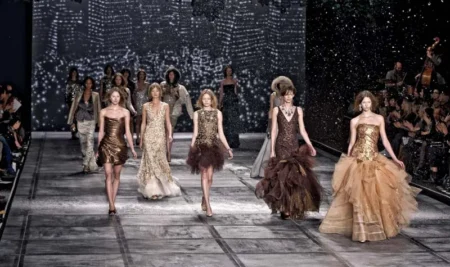
The Future of the Fashion Industry: Trends, Challenges & Innovations
The fashion industry is rapidly evolving and moreover, it’s entering a new era driven by sustainability, technology, and inclusion. Over the next five years, these transformative forces will reshape not only how we dress, but also how fashion is created, consumed, and perceived.
1. Sustainability Takes Center Stage
First and foremost, sustainability will become non‑negotiable. For instance, brands will ramp up sustainable sourcing, circular production, and zero‑waste initiatives to reduce their carbon footprint. Additionally, regulatory pressure will rise: in 2025, greenwashing and stricter eco‑rules are expected to intensify scrutiny on environmental claims.
Furthermore, India is accelerating toward a greener fashion future with schemes like MITRA and rooftop solar adoption to bolster eco‑friendly textile parks.
2. Technology Revolutionizes Design & Retail
Meanwhile, technology will continue to revolutionize the fashion landscape:
- AI & predictive analytics: Brands like H&M are experimenting with AI‑modeled campaigns, while algorithms refine inventory and trend forecasting.
- Digital fashion & metaverse: Expect to see more digital‑only garments and virtual try‑ons in gaming and VR environments.
- Agile and fast fashion 2.0: Powered by big data and AI, agile‑retail models will enable brands to respond faster to trends and consumer demands .
Consequently, tech investment will be essential to remain competitive.
3. Inclusivity & Adaptive Fashion Expansion
Moreover, inclusivity will become integral to brand identity. Adaptive fashion—clothing designed for users with disabilities—is gaining traction, and mainstream labels are finally embracing inclusive sizing and adaptive features.
In parallel, tribal and indigenous designs from India are rising in popularity, with initiatives like “Pride of Tribe” gaining global stage presence.
Also Read: The Cloud Kitchen Business Model: A Game-Changer in the Food Industry
4. Evolving Markets & Consumer Behavior
As consumers insist on ethical transparency and meaningful value, the luxury segment will redefine itself—no longer just opulence, but craftsmanship and sustainability will define luxury .
At the same time, emerging markets like India are projected to triple in value—targeting $350 billion by 2030—while aligning growth with emission‑reduction targets.
5. Challenges Ahead
Nonetheless, the path forward is not without hurdles:
- Economic headwinds: With growth hovering in low single digits and inflation-sensitive consumers, the global fashion outlook in 2025 will be cautious .
- Supply chain pressures: Disruptions from geopolitical tensions and climate change require brands to build resilience via near‑shoring and digital tracking .
- Talent and innovation gaps: In India, skilled-worker scarcity and weak innovation—particularly in textile hubs like Ludhiana—highlight the need for education and R&D investment.
6. Path Forward & Key Innovations
Therefore, the fashion industry must adopt:
- Blockchain for transparency in ethical sourcing.
- AI-assisted design and metaverse integration, offering personalized experiences and digital couture.
- Circular and zero-waste systems, expanding recycling and upcycling initiatives .
- Inclusive value-driven marketing, nurturing localized and tribal fashion dialogues alongside luxury yet conscious consumption.
Conclusion
Ultimately, over the next five years, the fashion industry will undergo a profound shift—from fast and wasteful to thoughtful, inclusive, and tech-savvy. As consumer values evolve, brands must evolve faster: sustainably, digitally, and with purpose. Those who blend innovation with responsibility will lead fashion into a more ethical—and stylish—future.